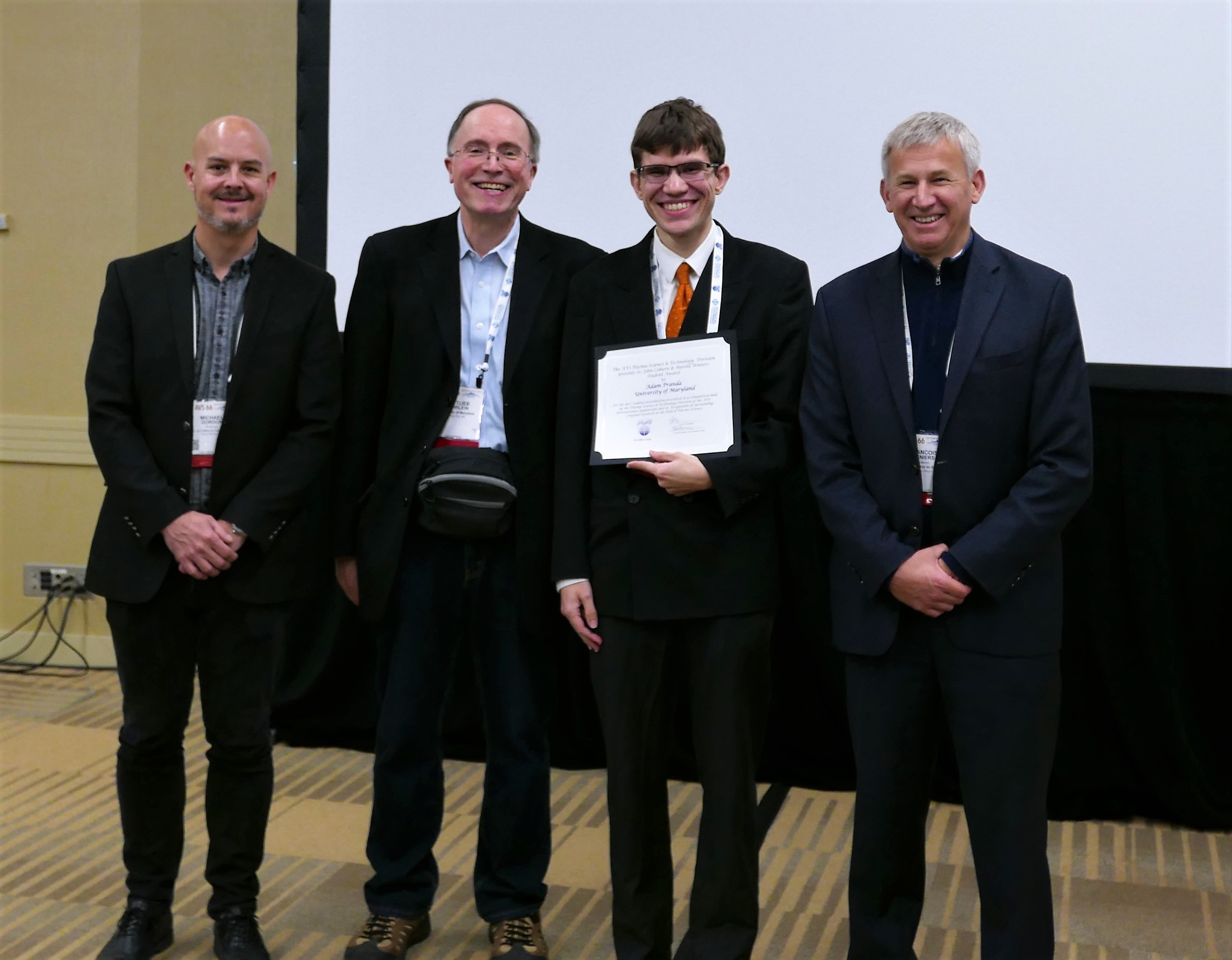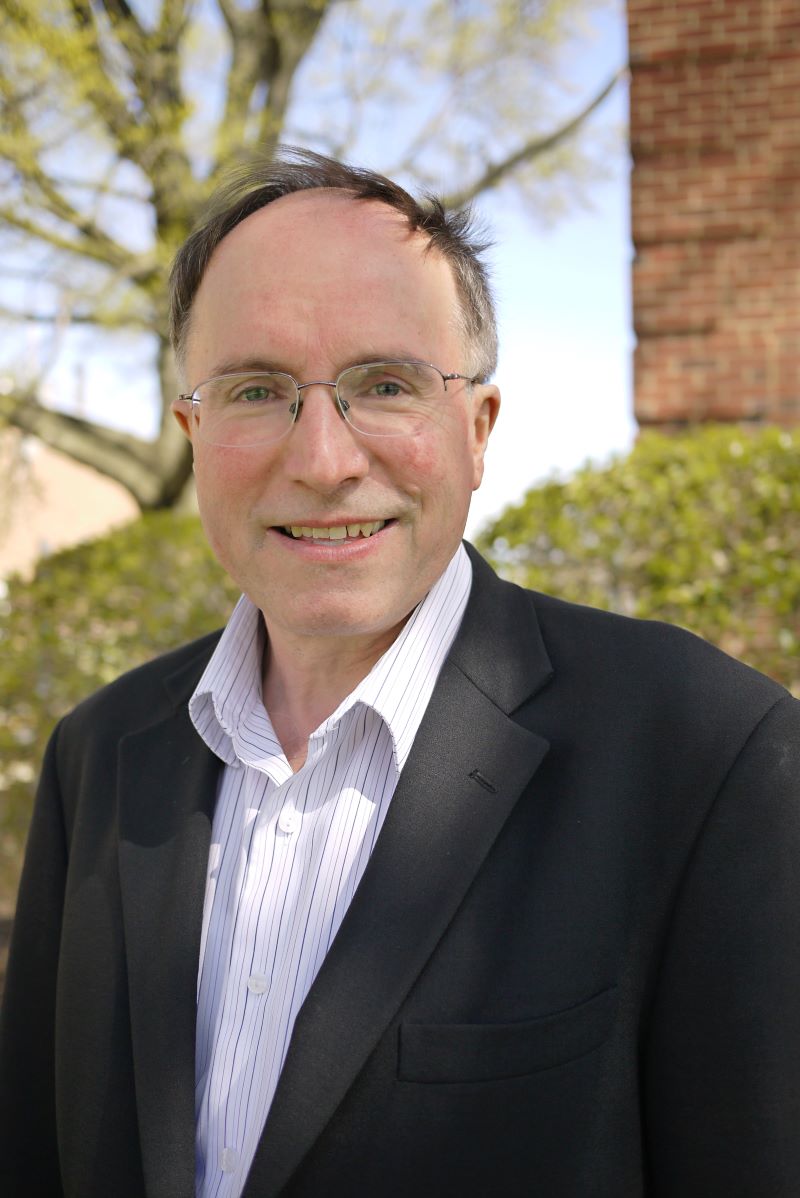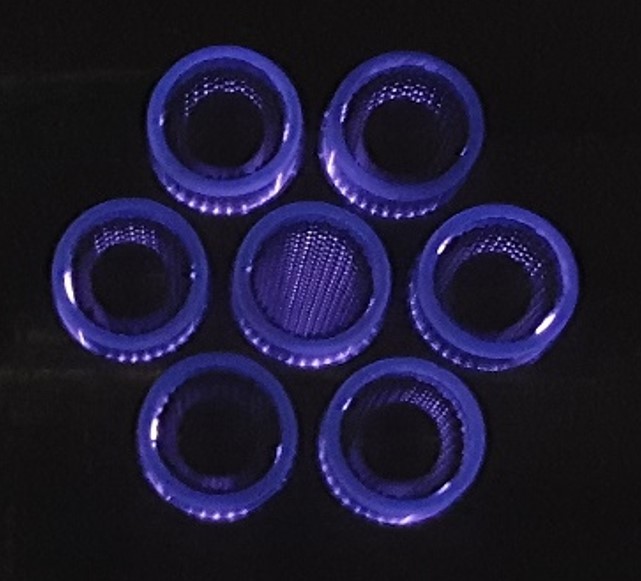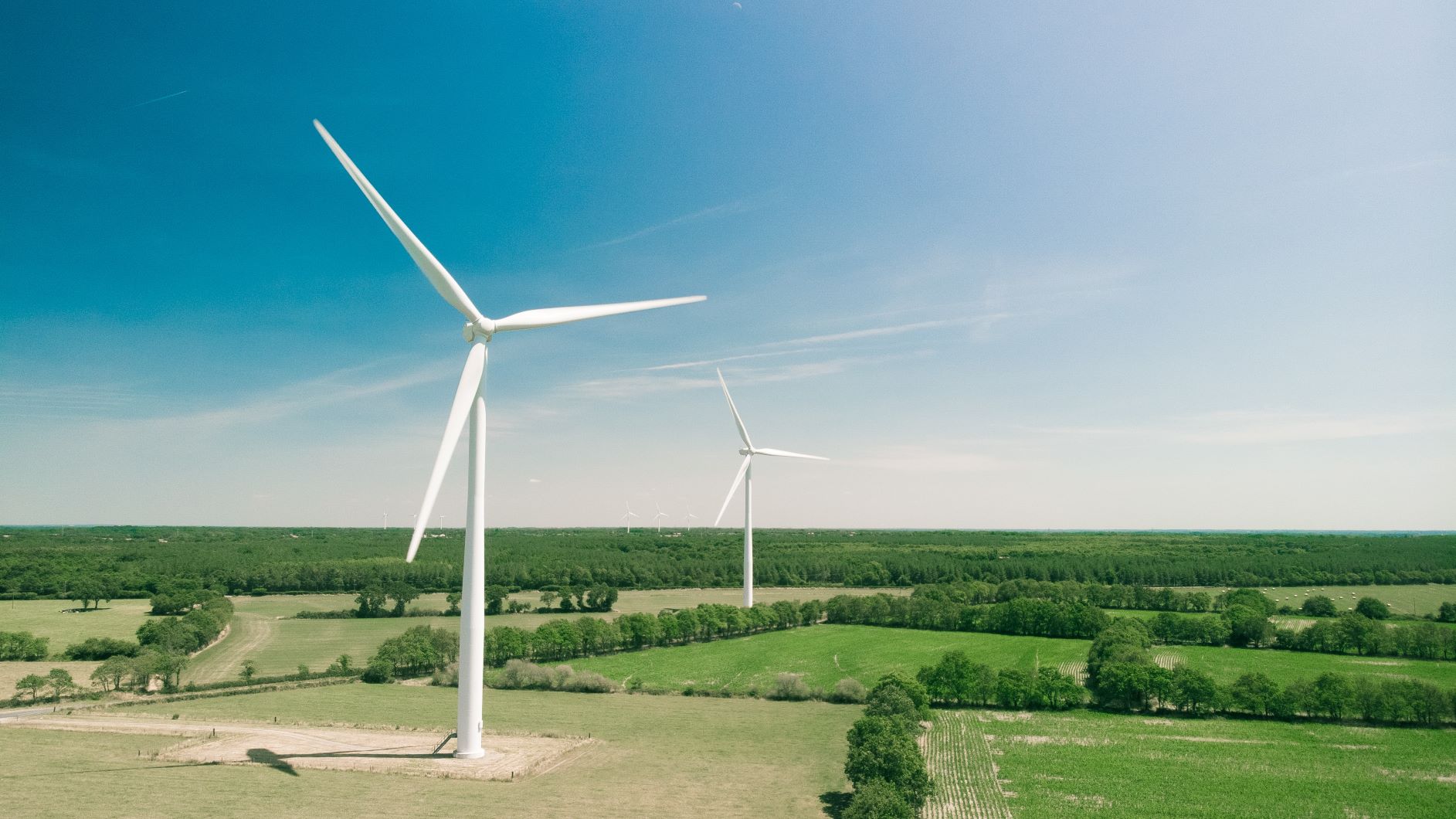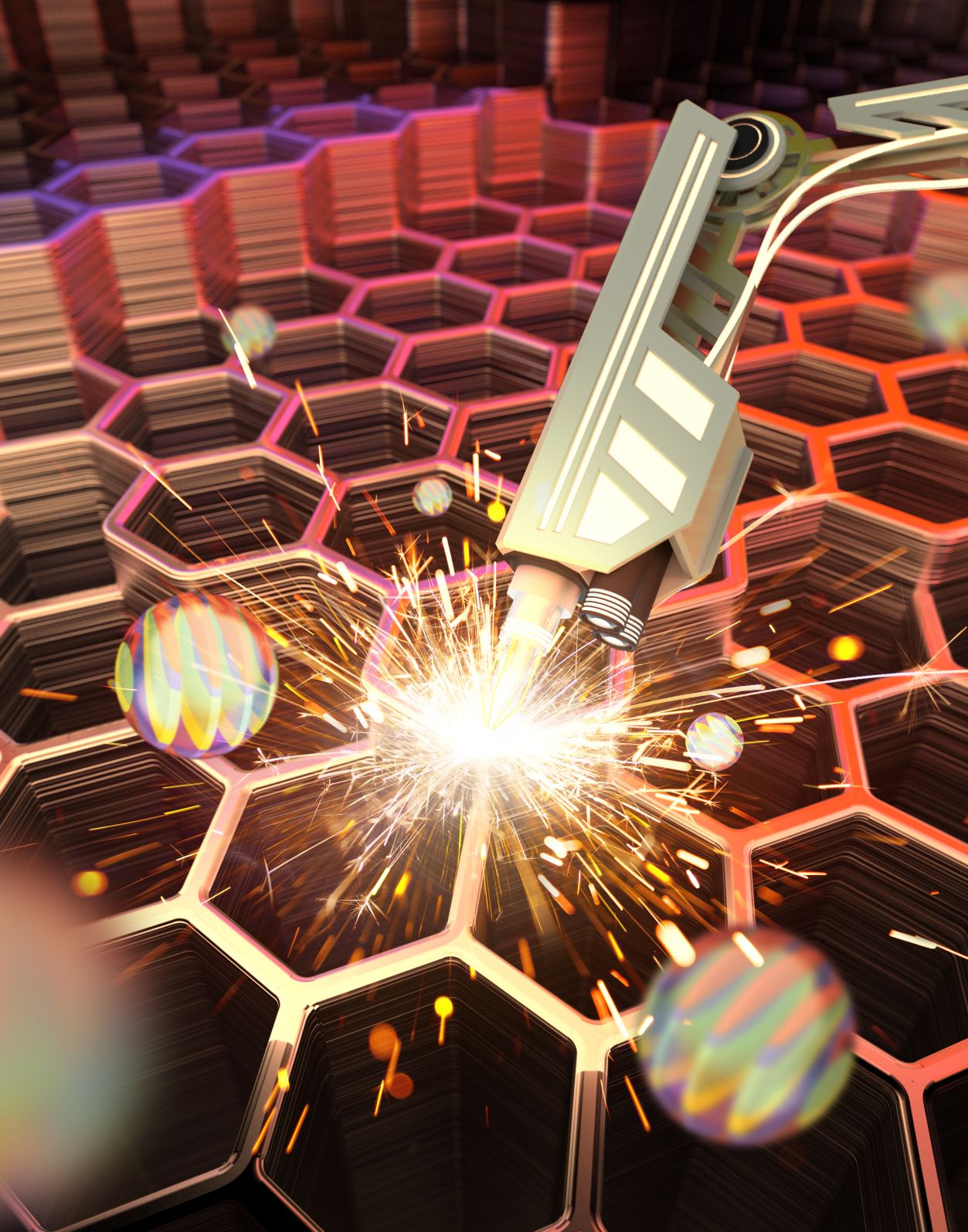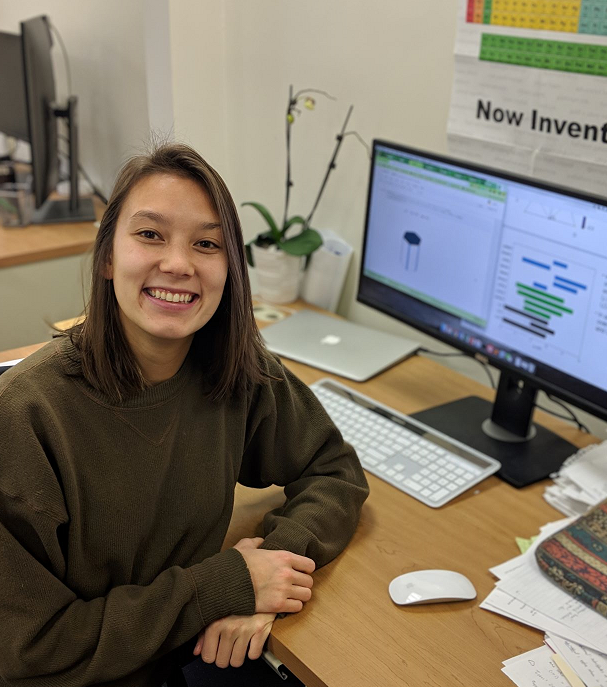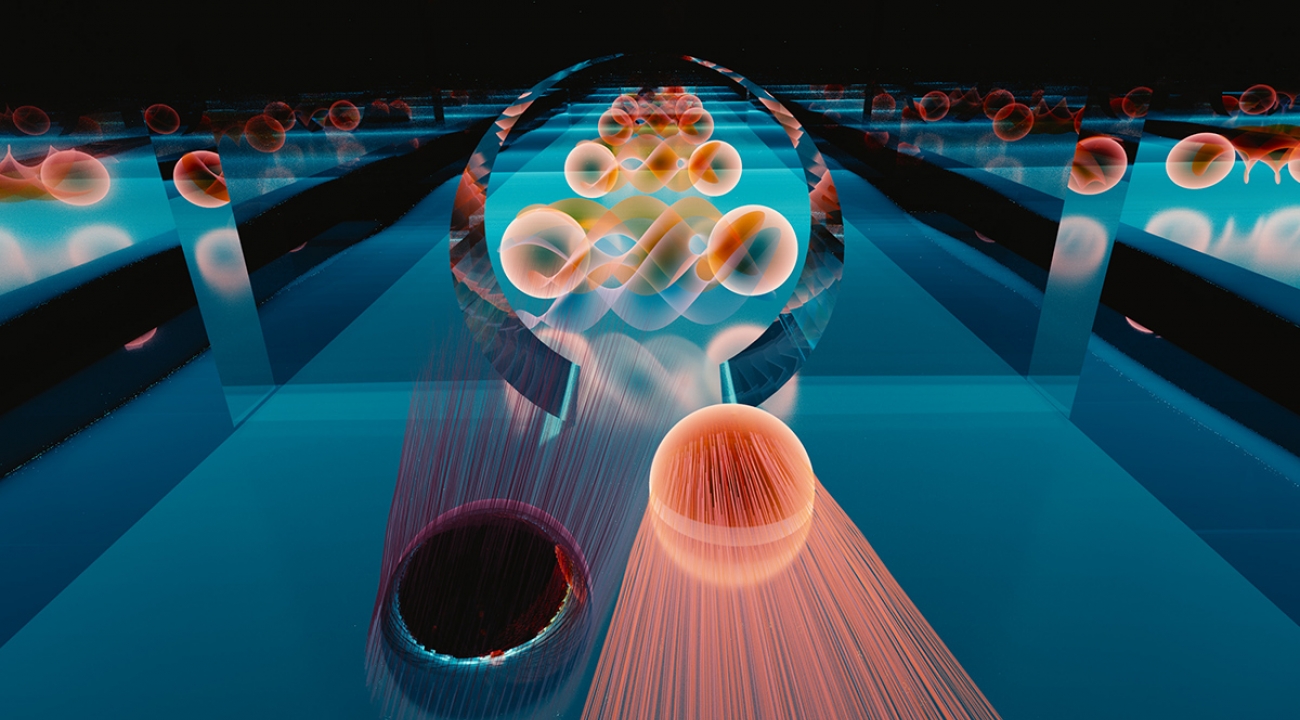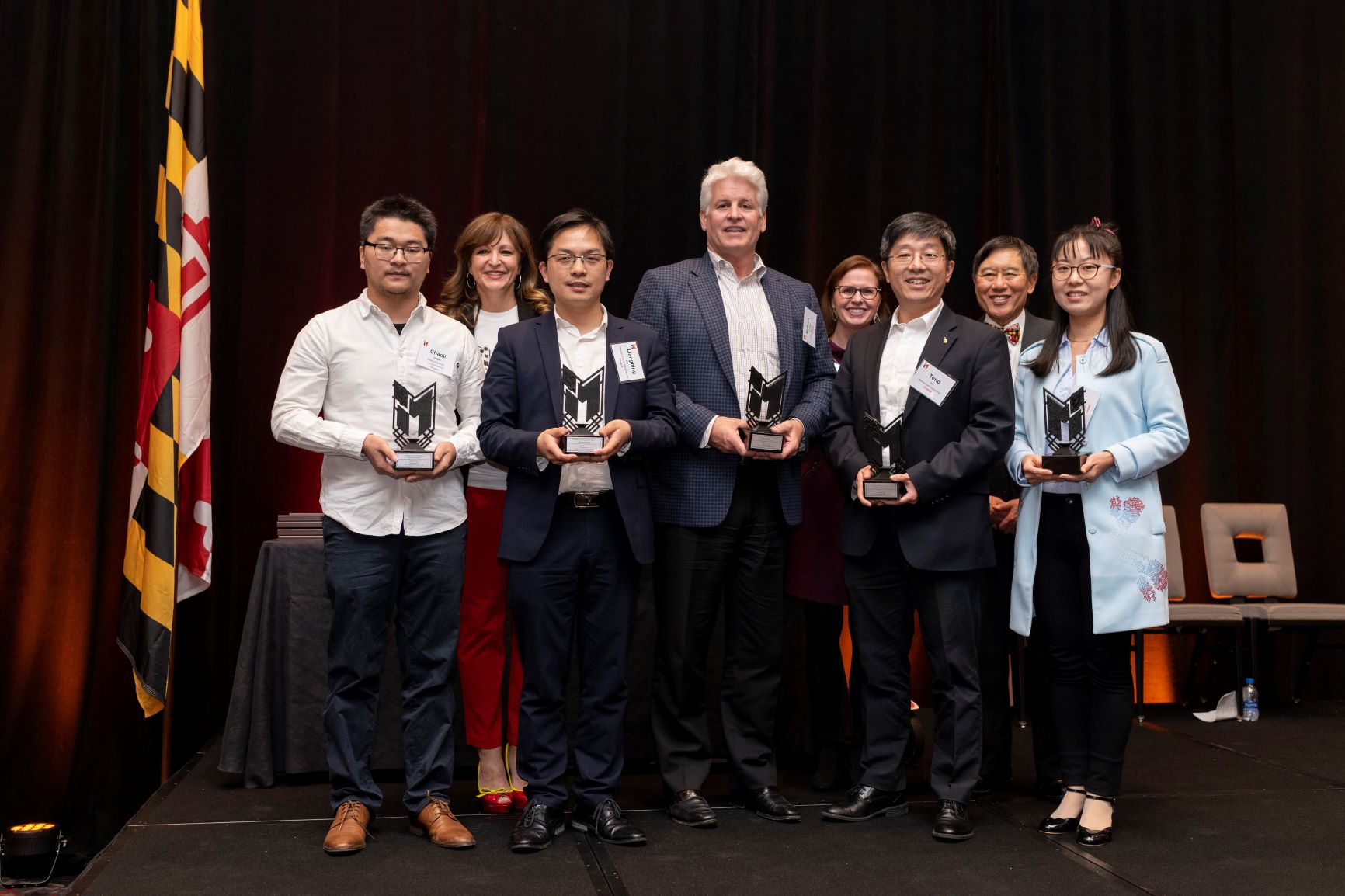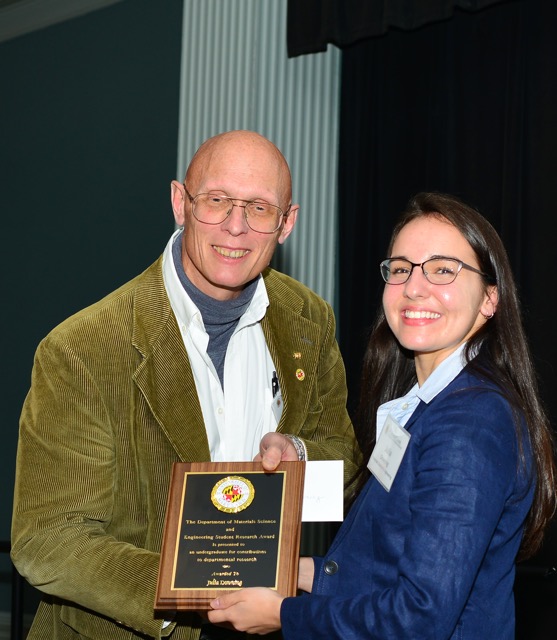News Story
UMD Graduate Student Kang-Yi Lin Receives 2019 ALD/ALE Award
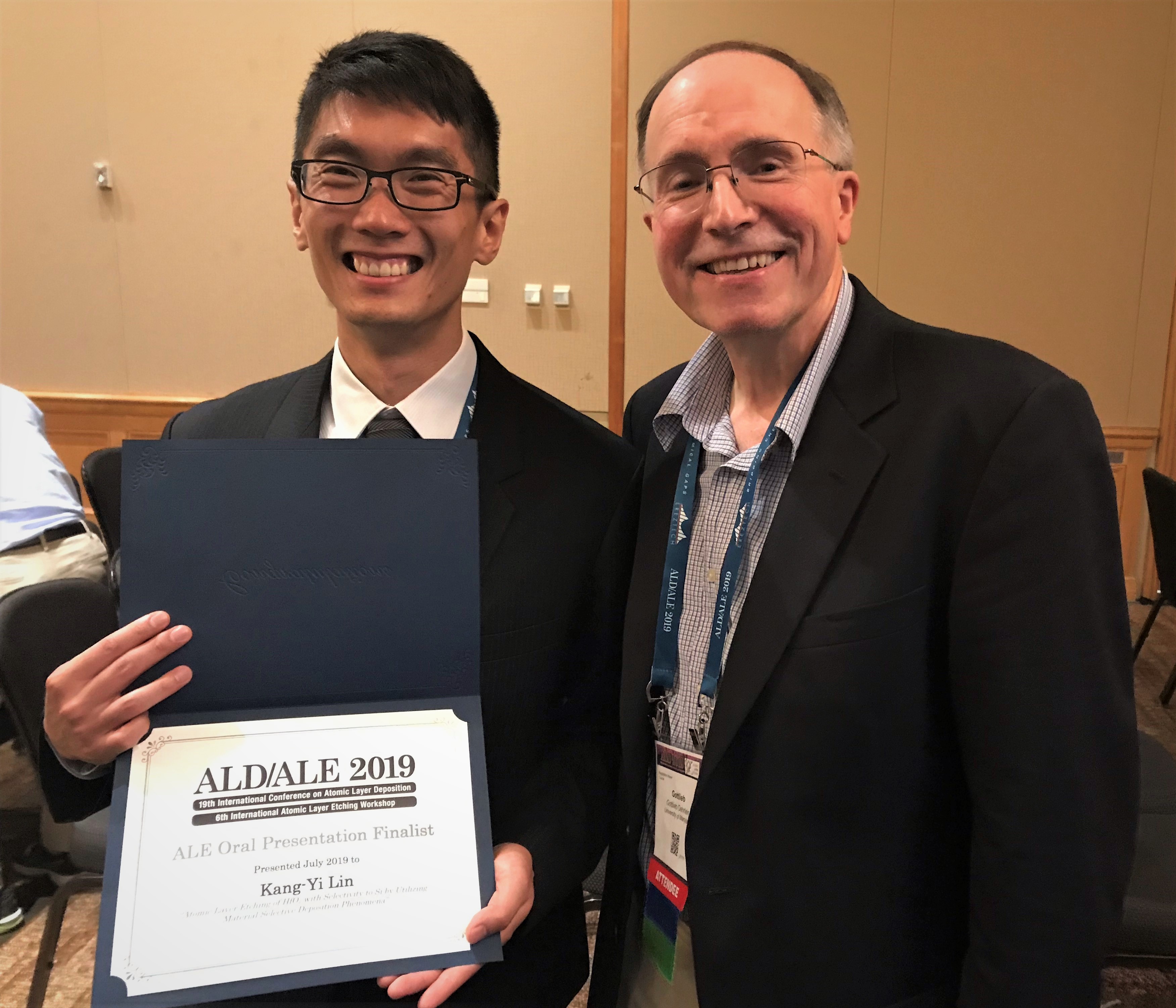
Lin and Oehrlein at the Bellevue conference this summer.
Kang-Yi Lin - a graduate student in the University of Maryland (UMD) Department of Materials Science and Engineering (MSE) - received the best presentation award at the 2019 AVS International Conference on Atomic Layer Deposition (ALD)/Atomic Layer Etching (ALE) for his talk entitled, Atomic Layer Etching of HfO2 with Selectivity to Si by Utilizing Material-Selective Deposition Phenomena.
Lin provided the following abstract: "Atomic layer etching (ALE) applies sequential deposition, reactant purge and etching steps with a short processing step length to establish self-limited material removal and atomic scale precision. The reactants during the ALE deposition steps may exhibit material-selective deposition based on the chemical affinity of precursor gases to the substrate material and nature of interfacial bonding. Integrating the feature of material-selective deposition with an etching step opens a new processing window for selective ALE. In this study, we evaluated the deposition behaviors of different hydrofluorocarbon (HFC) precursors, i.e. mixtures of methane (CH4) with trifluoromethane (CHF3) and mixtures of methane with octafluorocyclobutane (C4F8), on Si and HfO2 surfaces, respectively. This is followed by the investigation of substrate-dependent selective deposition using a mixture of HFC precursors to achieve HfO2 etching and etching selectivity relative to Si. Our results show that during the purge step of ALE sequences using CH4/CHF3 selectively deposit a fraction of a nm thick FC layers on Si surface while self-desorption is observed on the HfO2 surface. In contrast, mixtures of CH4 with C4F8 etchant do not show this self-desorption behavior for HfO2. By utilizing the selective deposition behavior seen for CH4/CHF3-based ALE in conjunction with low energy Ar ion bombardment we were able to remove the top HfO2 layer while simultaneously forming a FC passivation layer on the underlying Si surface. In order to confirm the etching performance of CH4/CHF3-based ALE of HfO2, X-ray photoelectron spectroscopy (XPS) was used to study whether any HfO2 remains on the sample at the end of the processing cycle where the in-situ ellipsometry indicated a depletion of the HfO2 layer. The XPS results show that after the ALE processing the Hf-O peaks no longer exist in the Hf4f and O1s spectra. Instead, a weak intensity of the fluorinated Hf peaks are observed, suggesting the HfO2 layer with an initial thickness of 2.9 nm was removed and a few hafnium etching byproducts were left on the substrate. These results support the concept that gas pulsing of complex HFC precursors during ALE sequences provides the opportunity to achieve material-selective deposition and enable ALE selectivity of HfO2 relative to Si. "
Lin, advised by MSE Professor Gottlieb Oehrlein, was also the runner-up for overall winner. This year's workshop was held July 21-24 in Bellevue, Washington.
For additional information, visit https://ald2019.avs.org/awards/.
Published September 11, 2019
